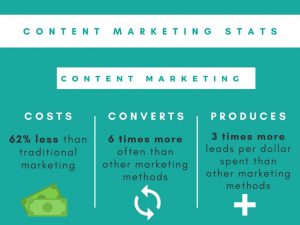We’re pretty sure you’ve noticed that consumer behavior has changed over the last few decades. Not only do consumers have different expectations when it comes to things like customer service and the number of choices offered to them, but they also want to be marketed to in a different way. And it seems like these two sides of the consumer coin are completely in opposition: while consumers want more service and more choices, they want less traditional marketing.
Think about how you feel about TV commercials now that media consumption has changed so much. They annoy you, right? And you’d prefer to skip right past them; maybe you even feel less inclined to buy from a business that interrupts your video with their intrusive ad! That’s pretty much how a lot of consumers feel about any kind of “outbound marketing” these days, or marketing that seeks them out and gets in their faces. Cold calling, email blasts, and direct mail are turning consumers off to an ever-greater extent, meaning you’ve got to find other ways to attract customers to you. That’s where “inbound marketing,” or marketing that “attracts, engages, and delights” your customers comes in.
What Is Inbound Marketing?

As we’ve pointed out, consumers are much less likely to be tempted by traditional, outbound marketing these days. Instead, they seem to increasingly prefer doing research online to choose companies and products that meet their needs. They want to feel in control of the whole process, and feel like they sought out the right product or service for them.
So that means your business needs to be there and ready when they come looking. Not necessarily ready to sell to them, but ready to help them and eventually become their go-to in your industry, so they are ready to buy from you. While outbound marketing is marketing geared towards reaching as many people as possible, inbound marketing is geared towards reaching the right people.
To break it down, inbound marketing methodology has the customer at its core, and is designed to meet their specific wants, desires, and needs through relevant content and resources, such as blogging, social media, ebooks, guides, and more. This content is created to answer common questions, speak to pain points, and offer solutions to your customers’ problems, in order to create a more seamless buying experience.
How do you do all that? It all comes down to attracting, engaging, and delighting your customers.
Attract, Engage, Delight
You can boil inbound marketing strategies down to these three little verbs: attract, engage, and delight. These are basically the three stages that you’ll need to guide your customers through to make this method successful for you – and remember, the whole goal is to pull them, not push them!
- Attract – This first stage has also been called the “stranger” stage: your customer doesn’t know you, and you don’t know them, so you’ll need to draw them in with valuable content and conversations that will make them want to engage with you, and that will earn their trust. For your part, you also want to make sure that you’re using this stage to attract the right customers.
- Engage – If you’ve attracted a stranger, you’re now at the point where you’ve got a lead. You’ll need to offer solutions and insights that speak to their pain points and help them towards their goals so they are more likely to buy from you.
- Delight – Once you’ve succeeded in engaging a lead, you’ll probably end up with a customer! But don’t stop now: you have to keep working actively to make sure people are completely satisfied with the services they receive from you, so that they stay loyal and continue to buy from you.
Sounds so easy when you break it down into those snazzy little verbs, right? But how do you get to the stage of having some new, delighted customers?
Inbound Marketing Strategies
1. Content, Content, Content
Inbound marketing is all about offering solutions and being a trustworthy source, so the most important way to get started is by creating valuable content. For example:
- Start a blog on your website, and post articles that display your expertise, as well as educate, inform, or entertain, depending on your audience.
- Offer a free downloadable guide that is directly related to your business – again, you want to attract the right customers.
- Post customer testimonials, so leads will know that you’re the right business for them.
- Use landing pages to tempt leads to exchange their contact information for additional helpful content or relevant offers with a compelling call to action.
- Create some infographics with tips and supporting statistics to both grab attention, and show your knowledge.
- Shoot some videos: some of the best marketing methods for capturing the attention of prospects include explainer videos, customer testimonials and other types of visual media.
Whatever content you decide is right for your business, remember to have a strategy behind it, produce it continuously, update it often, and always be answering your customers’ top questions: “What’s in it for me?” and “Why you?”
2. Go with SEO!
So how are you actually going to attract people to all this great content (and to your business)? That’s where a solid SEO game comes in: remember, 81% of consumers do research on the internet before they settle on a product or service, so you’ve got to be at the top of the search engine heap. If you’re using the right keywords, you can get your content (websites, blog articles, etc.) to the top of the Google search results and in the hands of the right potential buyers.
You can focus on multiple keywords to try and gain traffic, but some experts suggest focusing on a few keywords that are valuable, and creating specific pages on your website that are for those keywords specifically.
3. Get Social
It probably comes as no surprise to you that the average adult in the U.S. spends around 2 hours a day on social media, so guess what? You’ve got to be there, too! That’s where your customers are, and even if you aren’t there, they still could be talking about you – so take control of the conversation by:
- Sharing your blog posts on social media platforms, so you can both showcase your expertise AND drive traffic back to your website.
- Engaging with others on social media to humanize your brand. Get into the mix and post, comment, like, share, and follow so you can connect with your customers and leads.
- Offering extra support by being available to answer questions via various platforms.
“Listening” to and interacting with your customers on social media is a great way to meet them wherever they are in their buyer’s journey: you’re making things easy and convenient for them, and you’re learning a whole lot about them in the process.
4. Expand Your Offerings
After you’ve attracted some customers, you should also consider getting deeper into things in the engagement phase in order to convert leads into customers. You can offer them something of value in return for their conversion, like:
- Premium content
- Consultations
- Subscriptions
- Newsletters
To get leads to this point, always include a compelling call-to-action in your content, so they know exactly what they should do next to get to your special offers! And remember, at this stage, you’re still selling solutions, so focus on how you’re handling your interactions with interested parties.
5. Keep Delighting
Delighted customers are the best! They themselves can be a source of continuous revenue AND they can help bring in revenue by singing your praises to others. That means it’s important not to neglect them, and not to leave them out of your content creation – even after becoming your customer, people still want to consume valuable content. Consider creating both:
- Product-focused content, which includes information on how to get the most out of their purchase. This can include user guides, tips and tricks, or how-to/tutorial videos.
AND
- Company-focused content, which keeps customers engaged with your business as a whole. Play around with live videos on social media, or offering meetups or other events.
6. Ask Away
Finally, if you want to turn your delighted customers into brand ambassadors who are singing your praises, you have to know what’s on their minds, and make sure they’re satisfied. Ask for feedback, maybe by giving surveys (with incentives, if necessary) – this way, you’ll have a better idea of how to keep your customers AND how to attract more leads at the top of your sales funnel. Integrating the feedback you get from customers will allow you to create a friction-free sales experience throughout your whole cycle of attracting, engaging, and delighting.
There might still be a time and a place for outbound marketing, but in a lot of cases, it feels a bit like a thing of the past. These days, you need to be more creative to attract, engage, and delight people, and turn them into loyal customers. Maybe it feels a little daunting to rely on customers finding you, instead of you going out and pursuing them, but trust us: you can pull them in, instead of pushing them away, with some of the techniques laid out above. Let us know how your inbound marketing journey goes!


